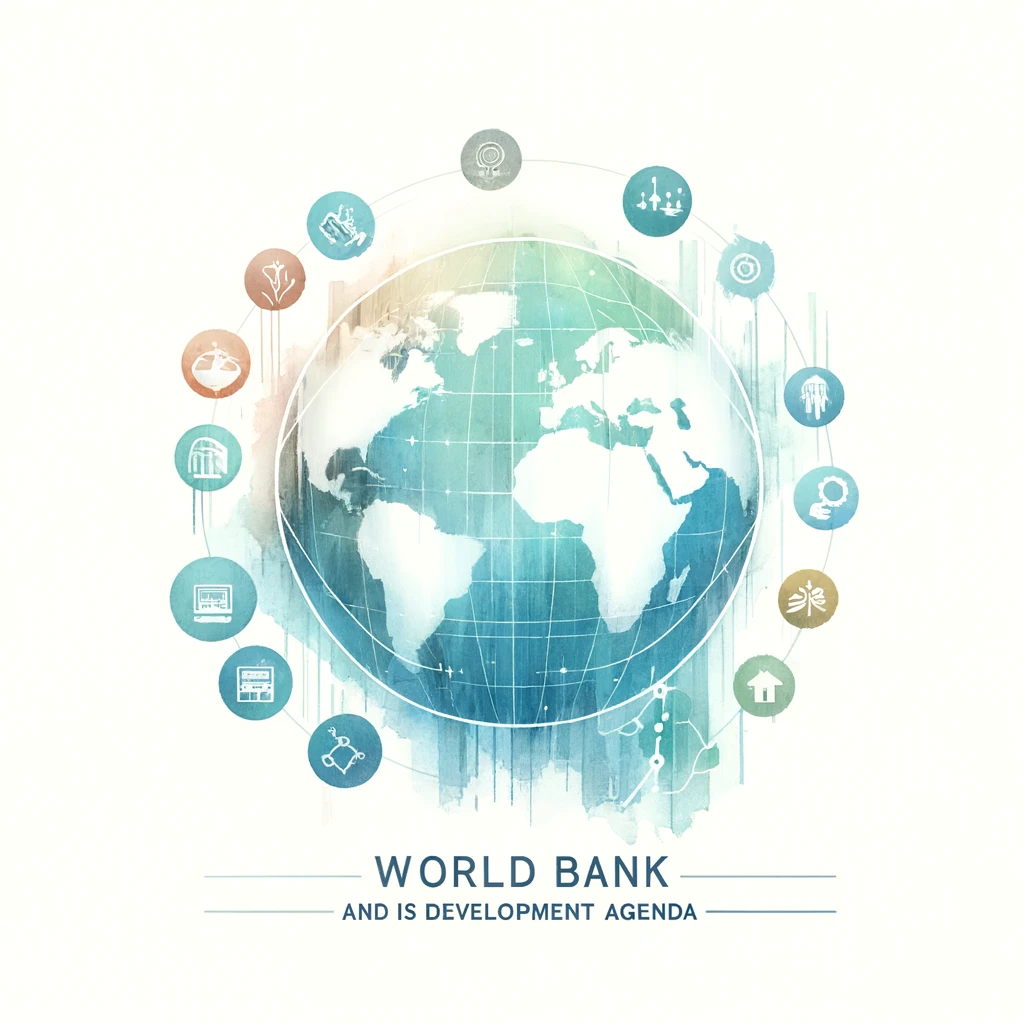Global trade refers to the exchange of goods, services, and capital between countries across the world. It has been a driving force behind economic growth and development, enabling nations to access products, resources, and technologies beyond their borders. Over the centuries, global trade has transformed industries, improved living standards, and fostered international cooperation. Protectionism involves government policies that restrict international trade to protect domestic industries. These measures, like tariffs and quotas, aim to reduce foreign competition but can lead to higher consumer prices and trade conflicts.
- Promotes economic interdependence between countries, creating opportunities for growth and partnerships.
- Allows access to a wide variety of goods and services that are not locally available.
- Encourages innovation by exposing industries to global competition and advancements.
- Supports job creation by expanding markets for domestic industries and producers.
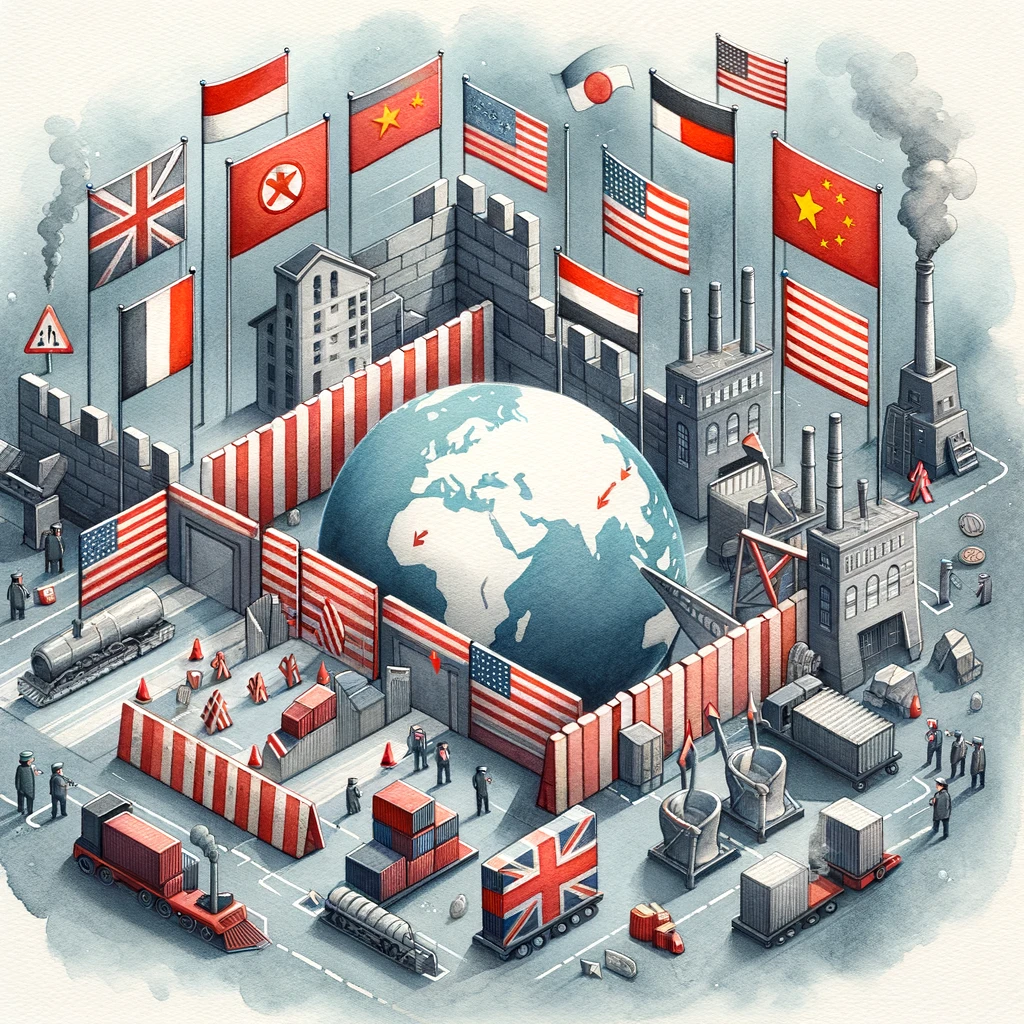
Understanding Protectionism
Protectionism is a kind of economic policy that has been instituted to discourage imports in order to protect the indigenous industries. It involves imposing tariffs and quotas or imposing regulations that boost local production but may often heighten trade tensions.
Definition and Types of Protectionist Measures
Protectionism refers to those economic policies and practices that attempt to limit imports in order to offer protection to the domestic industries against foreign competition. Such policies have been observed to defend local businesses, jobs, and national economic self-sufficiency. Some common ways of protectionist measures are:
- Tariffs: Imposed on imported goods, raising their costs and therefore less competitive than domestic products. It is the case of the tariffs inflicted by the U.S. government in 2018 on imported steel and aluminum in order to safeguard U.S. internal industries.
- Quotas: Quantitatively limited imports, therefore a direct restraint on supply to the benefit of internal producers. For example, the European Union has constructed quotas on most agricultural products imported into the EU.
- Subsidies: The subsidy to the domestic industries so that their products become comparatively cheap, thus improving competitiveness. Given subsidies can be direct payments, tax breaks, or low-interest loans. The U.S. government gives subsidies to the agriculture sector of the United States to support its farmers.
- Import licenses: These are the licenses released to the importers for importing goods into the country and controlling the inflow of imports. Import licenses help the country to control the inflow of certain goods, for example, pharmaceuticals and electronics.
- Non-Tariff Barriers: Rules and regulations intended to make it unattractive for imported goods to penetrate into the domestic market. These could include all sorts of restricted safety standards, labeling requirements, and environmental restrictions. This is apparent in how specific the regulations regarding GMO are that have been set by the EU.
Historical Context and Examples
Protectionism has a history as long as the mercantilist policies of the 16th and 17th centuries when the European nations were seeking to maximize exports and minimize imports toward building their wealth and power. In the 19th and early 20th centuries, protectionist measures were generally applied to support industrialization and economic development.
Historical Examples
- The Smoot-Hawley Tariff Act in 1930: The U.S. used this act during the Great Depression, increasing its tariffs on thousands of imported goods. This was one of the major causes behind the contraction in global trade and the deterioration in economic conditions.
- Import Substitution Industrialization (ISI): Most developing countries adopted ISI as an economic policy after the mid-20th century, thus cutting down on reliance on imported commodities and producing at home. India and Brazil are examples of such countries when they employed significant tariffs, quotas, and even more protectionist policies to promote local manufacturing.
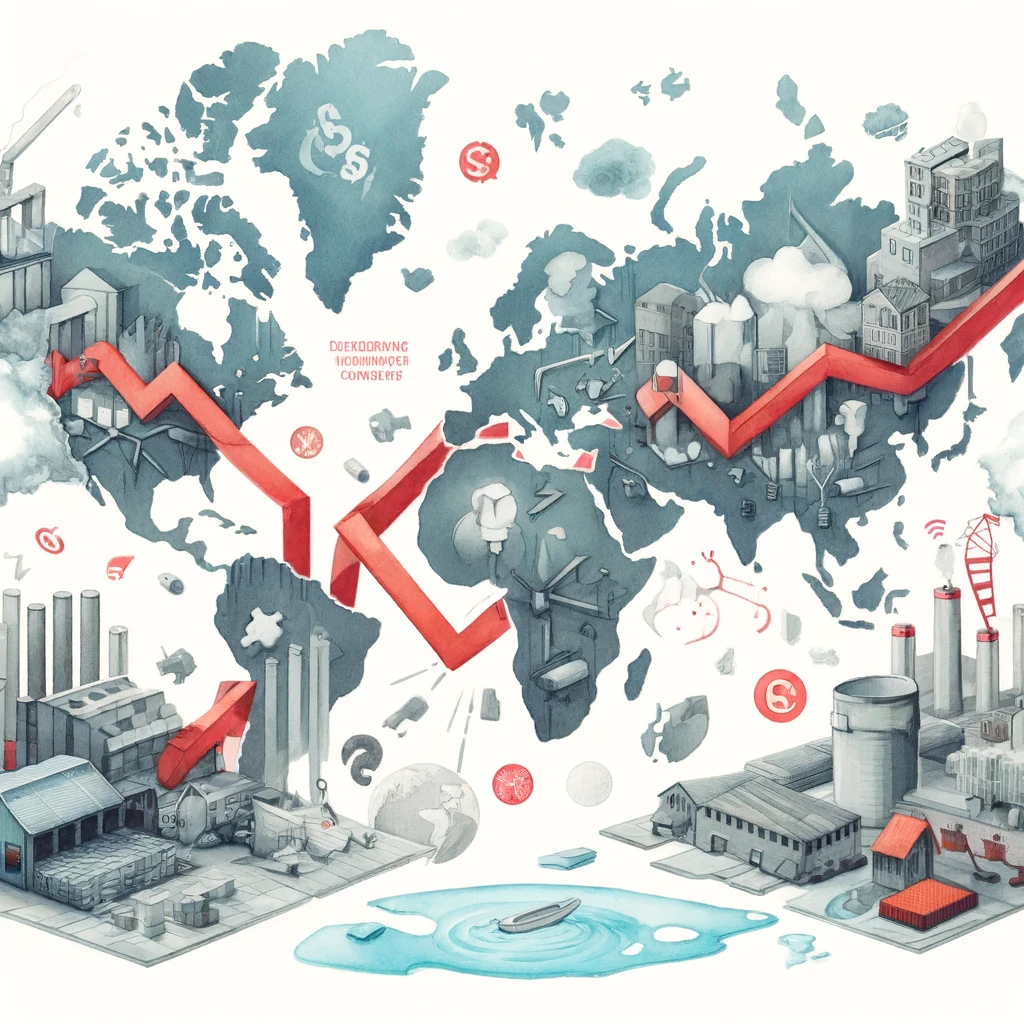
Arguments for and Against Protectionism
Protectionism has both supporters and critics. Proponents argue it protects domestic jobs and industries, while opponents claim it limits trade, raises prices, and hinders economic growth and global cooperation.
Arguments for Protectionism
- Preservation of Local-Based Employment: The import restriction can be the bastion of protectionism toward saving local-based employment that would be taken away by competition from abroad. This also significantly applies to manufacturing and agriculture industries.
- Promotion of Industrial Growth: Protection policies help newly emerging industries grow since they are provided with insulation from international competition before they can find ground on their own.
- This supports national security since the countries that embrace protectionism do this to safeguard their defense industries and food production when necessary.
- Reducing Trade Deficits: Protectionism discourages imports, thus reducing trade deficits, which ultimately supports a balanced trade relationship.
Against Arguments on Protectionism:
- Higher Consumer Prices: The amount of money spent on importing goods increases due to tariffs and other forms of trade barriers, and the final consumer has to pay a price premium. This will reduce his or her purchasing power and generally low welfare.
- Retaliation and Trade Wars: Retaliation against protectionist measures will often lead into a trade war situation threatening the global trade and economic growth.
- Reduced Economic Efficiency Protectionism can lead to inefficiencies because it encourages the production of commodities that could be produced at lower costs elsewhere through greater productivity.
- Impact on Global Trade Protectionism undermines the gains of free trade, which include a better market access, economy of scale, technology diffusion, and innovation.
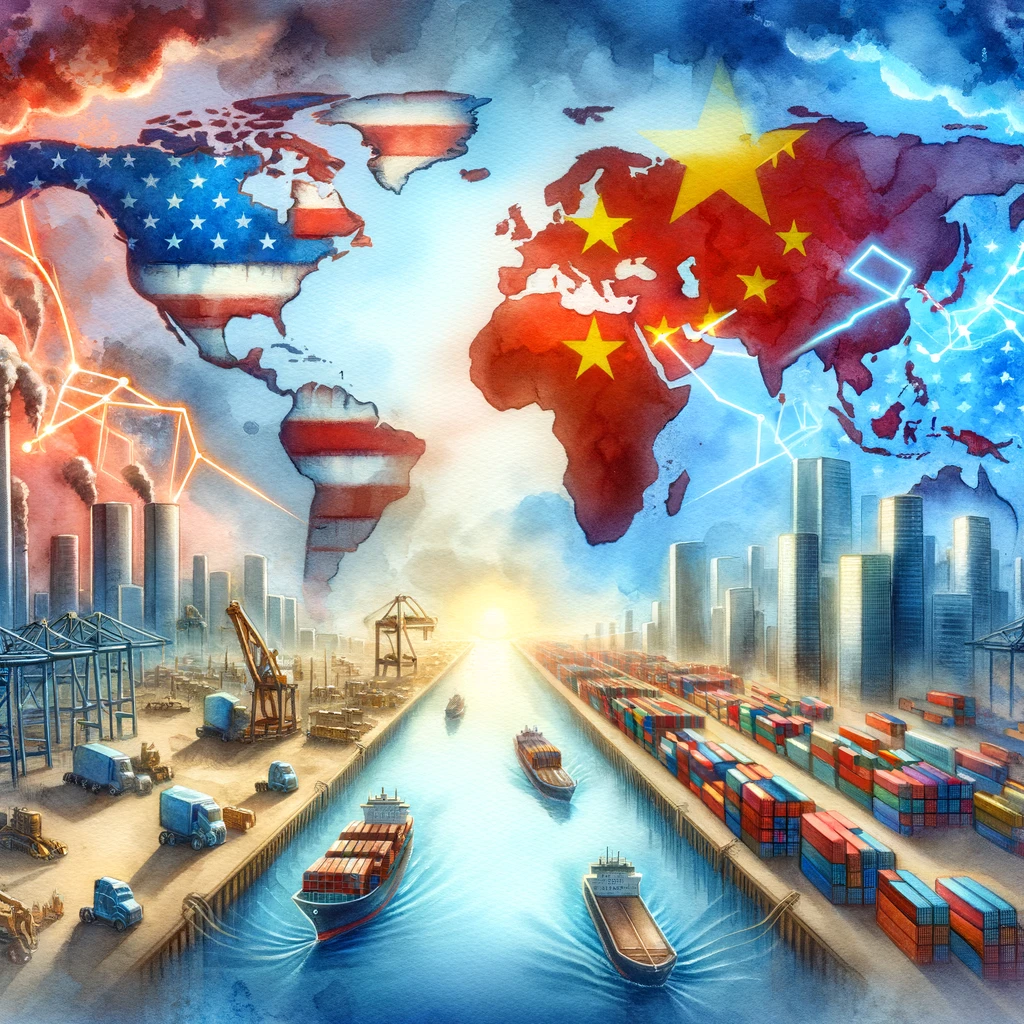
Recent Examples of Trade Wars
Recent trade wars, like the U.S.-China conflict, involve countries imposing tariffs and restrictions on each other’s goods, leading to economic tensions, disrupted supply chains, and increased uncertainty in global markets.
US-China Trade War and Its Global Impact
One of the most significant trade wars recently that originated in 2018 is between the US and China. The war initiated when the U.S. claimed the latter had been engaged in unfair trade practices, committed intellectual property theft, and also had a huge trade deficit against China. Against this action, China retaliated by imposing tariffs on imports from the U.S.
Key Impacts
- Global Supply Chains: The trade war disrupted global supply chains, particularly in industries like electronics and automotive manufacturing, where components are sourced from multiple countries.
- Economic Slowdown: The tariffs led to increased costs for businesses and consumers, contributing to slower economic growth in both countries and globally.
- Shift in Trade Patterns: Some companies relocated production from China to other countries to avoid tariffs, leading to shifts in global trade patterns and investment flows.
Brexit and EU Trade Negotiations
Brexit denotes the United Kingdom’s exit from the European Union, an action that has resulted in far more than mere consequences for the economic ties between the UK and the EU. Following Brexit, the two had to discuss and commit to new trade relations that continue to create the contours of their economic relationship.
Key Impacts:
- Trade Barriers: The end of the UK’s participation in the EU’s single market and customs union introduced new trade barriers, such as customs checks and regulatory divergence.
- Economic Uncertainty: The uncertainty surrounding Brexit and the future of UK-EU trade relations has affected business investment and economic growth in both regions.
- Trade Diversion: The UK has sought to establish new trade agreements with countries outside the EU, leading to changes in trade patterns and relationships.
Trade Tensions Between Major Economies
In recent years, trade tensions have emerged between major economies, such as the U.S. and the European Union, and between Japan and South Korea. These tensions often arise from disputes over tariffs, trade balances, and regulatory standards.
Key Impacts:
- Tariff Disputes: Tariff increases and retaliatory measures have disrupted trade flows and increased costs for businesses and consumers.
- Regulatory Conflicts: Differences in regulatory standards, such as those related to digital services and environmental policies, have created trade barriers and tensions between countries.
- Strategic Competition: Trade tensions are often linked to broader strategic competition and geopolitical considerations, affecting global trade dynamics and economic cooperation.
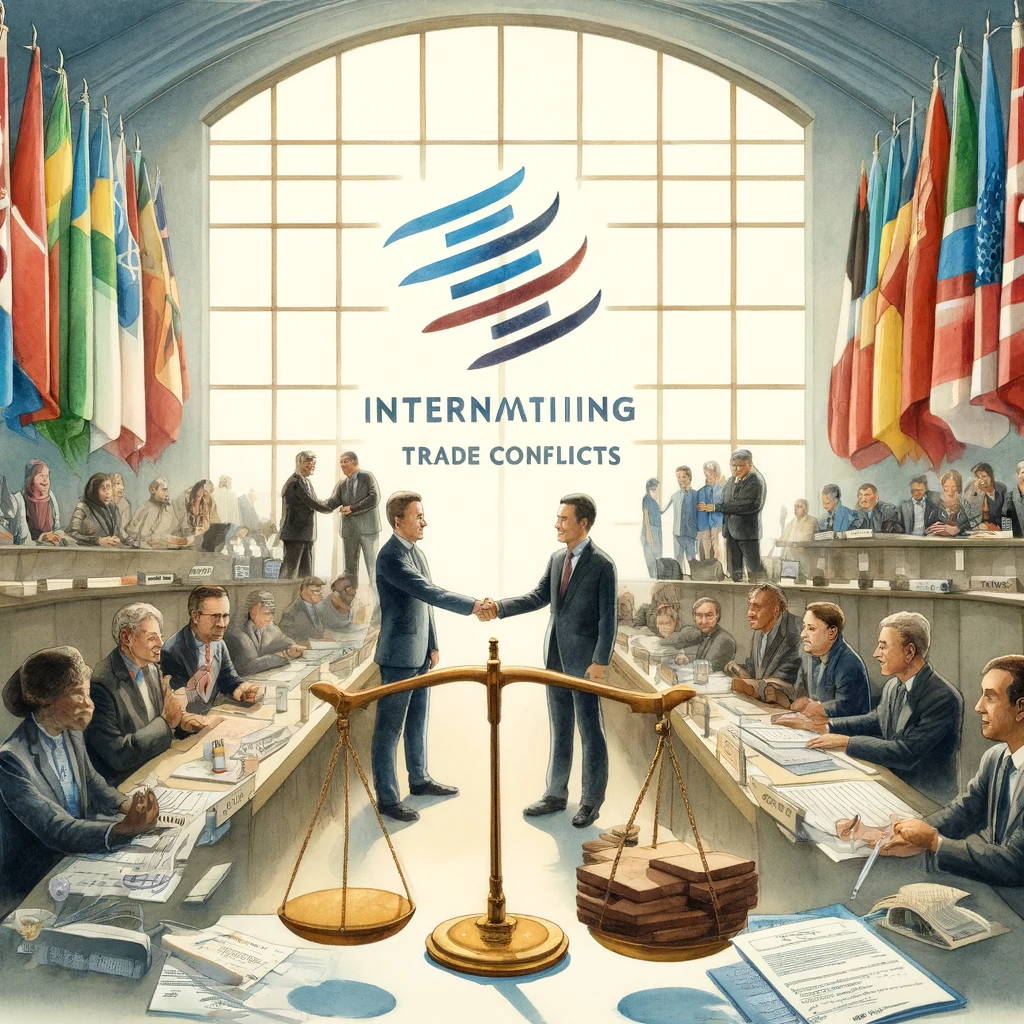
Economic Consequences of Protectionism
Protectionism can lead to higher consumer prices, reduced international trade, and inefficiencies in domestic industries. While it may protect local jobs short-term, it often hinders long-term economic growth and global competitiveness.
Impact on Global Supply Chains and Prices
Protectionist measures, such as tariffs and import restrictions, disrupt global supply chains by increasing costs and creating uncertainty for businesses. This can lead to higher prices for goods and services, as companies pass on the increased costs to consumers.
Key Impacts
- This increases the cost of production because firms pay more for parts imported from other countries. Then, the implications are reflected in the higher prices of finished goods.
- The supply chain is surely negatively impacted by trade barriers. The disruption causes delays and shortages in deliveries of critical inputs, thereby affecting the processes of production and, ultimately, the global supply chains.
- Consumer Effect: Higher prices for goods mean that consumers will have to pay a premium, thus reducing purchasing power. This may cause a decline in demand and lower economic growth.
Effects on Economic Growth and Employment
Protectionism can have negative effects on economic growth and employment by reducing trade volumes, increasing costs, and creating inefficiencies in the economy.
Key Impacts
- Reduced Trade and Investment: Trade barriers limit market access and reduce opportunities for trade and investment, slowing economic growth.
- Job Losses: While protectionism may protect jobs in certain industries, it can also lead to job losses in sectors that rely on exports or imported inputs.
- Economic Inefficiencies: Protectionism encourages the production of goods that could be produced more efficiently elsewhere, leading to higher costs and lower productivity.
Long-Term Implications for International Relations
Protectionism and trade wars can strain international relations and undermine global economic cooperation, leading to long-term implications for trade and economic stability.
Key Impacts
- Increased Tensions: Trade conflicts create tensions between countries, affecting diplomatic relations and international cooperation.
- Fragmentation of Trade Systems: Protectionist measures can lead to the fragmentation of global trade systems, with countries forming regional trade blocs and pursuing unilateral trade policies.
- Impact on Multilateralism: Protectionism undermines the principles of multilateralism and free trade, weakening international institutions and agreements that promote economic cooperation.
Conclusion
Global trade is integral to economic development as well as international cooperation. The diversity of countries in terms of goods and services that it has access to is made possible. As such, the process is triggered by innovation and competition. However, both disputes over trade and protectionism act as barriers. Therefore, free trade has to be balanced with fair practices for lasting global economic stability and development.
| Global Trade UPSC Notes |
| 1, Global trade facilitates economic growth by enabling countries to specialize in the production of goods and services in which they have a comparative advantage. 2. The World Trade Organization (WTO) plays a critical role in regulating international trade, ensuring transparency, and resolving disputes between nations. 3. Trade agreements, both multilateral and bilateral, help reduce trade barriers, promoting free flow of goods and services across borders. 4. Trade imbalances, where imports exceed exports, can lead to economic instability, influencing a country’s foreign exchange reserves and fiscal policies. 5. Global trade is highly dependent on international logistics and infrastructure, with disruptions like pandemics or geopolitical tensions affecting supply chains. 6. Trade protectionism, including tariffs and subsidies, can distort global trade dynamics, impacting developing economies and their access to global markets. 7. Emerging trends in global trade include the shift towards digital trade, e-commerce, and increased reliance on technology to facilitate cross-border transactions. 8. Environmental concerns are increasingly influencing global trade policies, with countries incorporating sustainability and green initiatives into trade agreements. |


